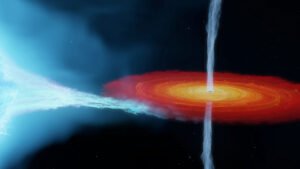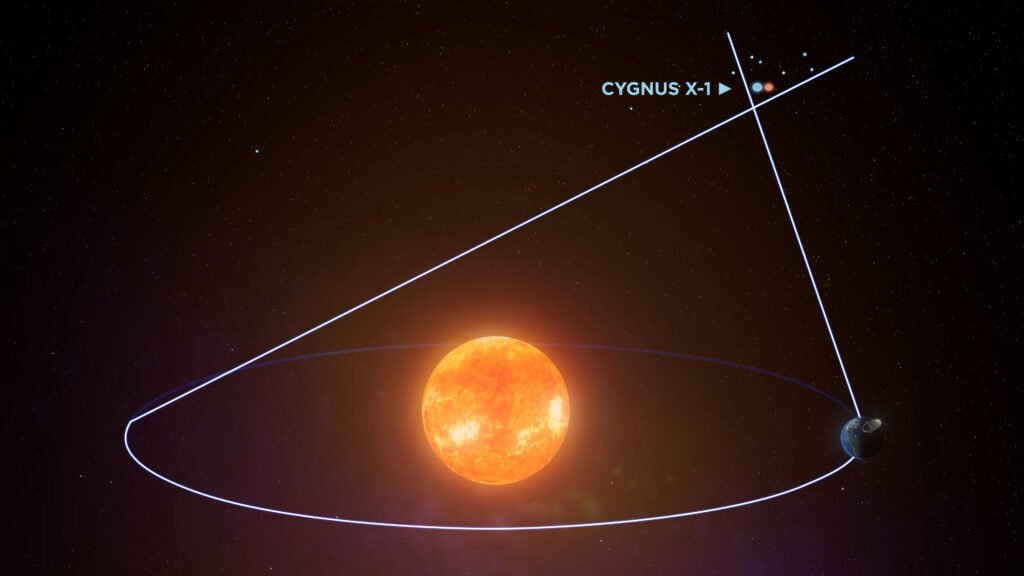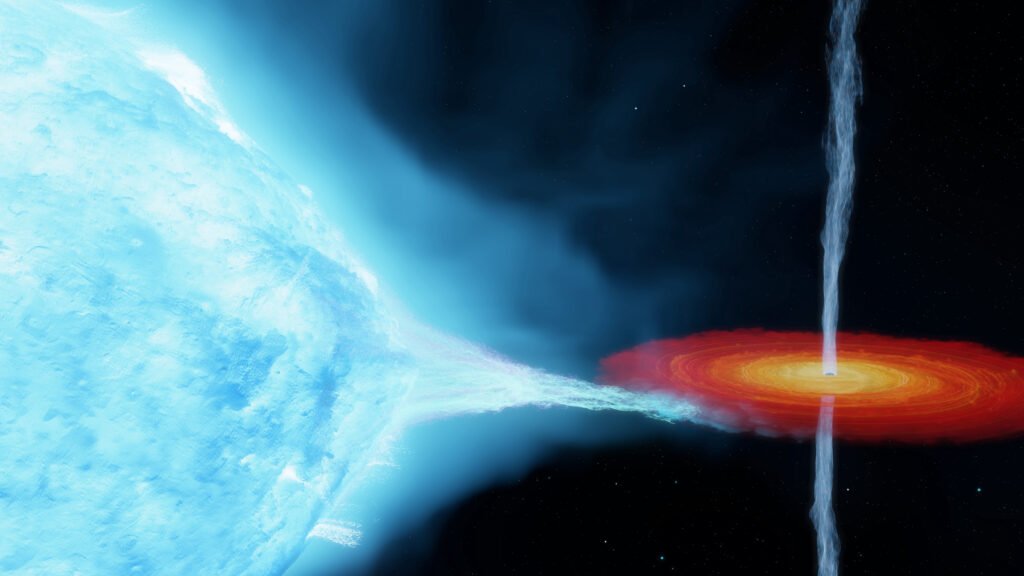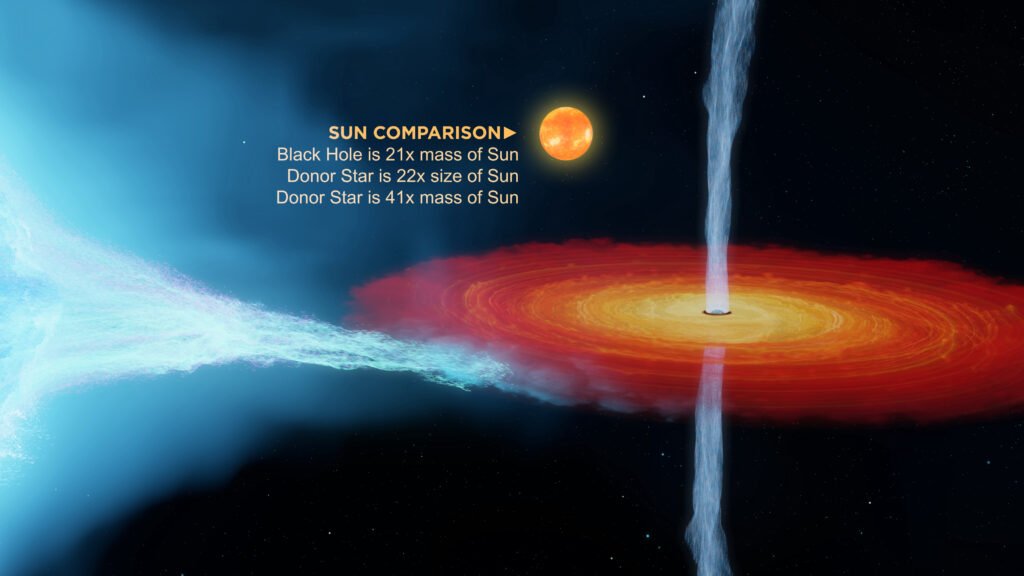20.02.2021
Weighing in at roughly 21 solar masses, the black hole in the X-ray binary system Cygnus X-1 is so massive that it challenges current stellar evolution models, a new study reveals. Ultimately, the mass of a black hole is determined by its parent star's properties and is generally constrained by the mass lost to stellar winds throughout its lifetime. If a black hole interacts with a binary companion star, the system emits X-rays and can sometimes form radio jets, which make the systems visible to electromagnetic observations as an X-ray binary. Measurements from known x-ray binaries have shown that black holes in these systems all have masses below 20 solar masses (M?), with the largest being 15-17 M?. However, gravitational wave detections of black hole merger events have found more massive black holes, reaching upwards of 50 M?, revealing a discrepancy that challenges current theories on black hole formation from massive stars. Here, James Miller-Jones and colleagues present new observations of Cygnus X-1 - a well-studied stellar-mass black hole located in our Milky Way Galaxy - using the Very Long Baseline Array (VLBA). Between May 29 and June 3, 2016, they performed six observations (one per day) of Cygnus X-1 with the VLBA. Using the new data and archival observations, Miller-Jones et al. refined the distance to the X-ray binary and found it to be farther away than previously estimated, thus raising the inferred mass of the system's black hole to 21 M?. The new measurements establish Cygnus X-1 as the most massive electromagnetically detected stellar-mass black hole currently known. According to the authors, for a black hole this massive to exist in the Milky Way, the mass lost through stellar winds during the progenitor star's evolution must have been lower than what current models predict.
Quelle: AAAS
+++
The first black hole ever discovered is more massive than previously thought
Cygnus X-1 is the heaviest stellar black hole observed without using gravitational waves
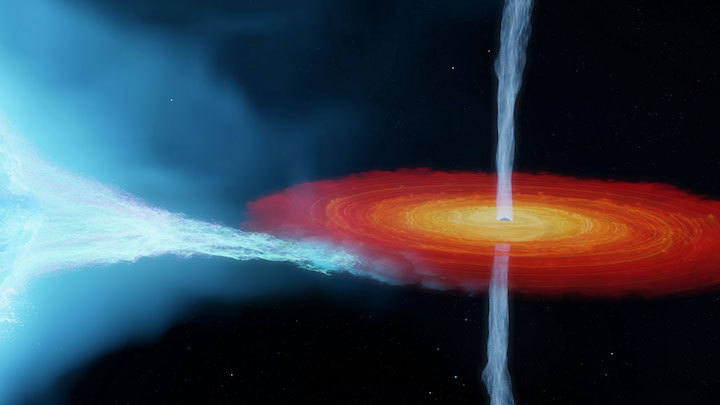
The famed Cygnus X-1 black hole (illustrated, slurping mass off its companion star) is nearly 1.5 times as massive as astronomers thought, new observations suggest.
INTERNATIONAL CENTRE FOR RADIO ASTRONOMY RESEARCH
The first black hole ever discovered still has a few surprises in store.
New observations of the black hole–star pair called Cygnus X-1 indicate that the black hole weighs about 21 times as much as the sun — nearly 1.5 times heavier than past estimates. The updated mass has astronomers rethinking how some black hole–forming stars evolve. For a star-sized, or stellar, black hole that massive to exist in the Milky Way, its parent star must have shed less mass through stellar winds than expected, researchers report online February 18 in Science.
Knowing how much mass stars lose through stellar winds over their lifetimes is important for understanding how these stars enrich their surroundings with heavy elements. It’s also key to understanding the masses and compositions of those stars when they explode and leave behind black holes.
The updated mass measurement of Cygnus X-1 is “a big change to an old favorite,” says Tana Joseph, an astronomer at the University of Amsterdam not involved in the work. Stephen Hawking famously bet physicist Kip Thorne that the Cygnus X-1 system, discovered in 1964, did not include a black hole — and conceded the wager in 1990, when scientists had broadly accepted that Cygnus X-1 contained the first known black hole in the universe (SN: 4/10/19).

